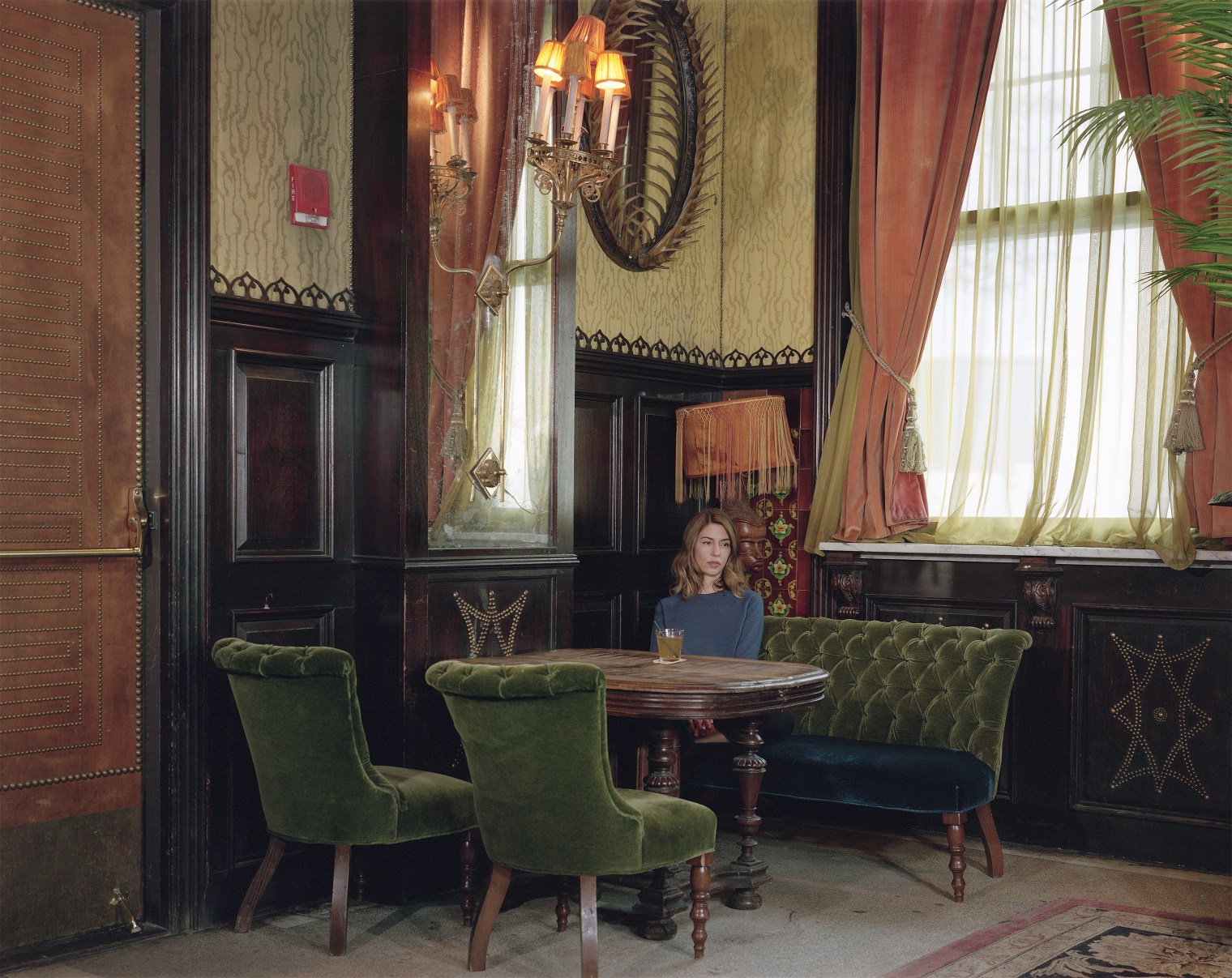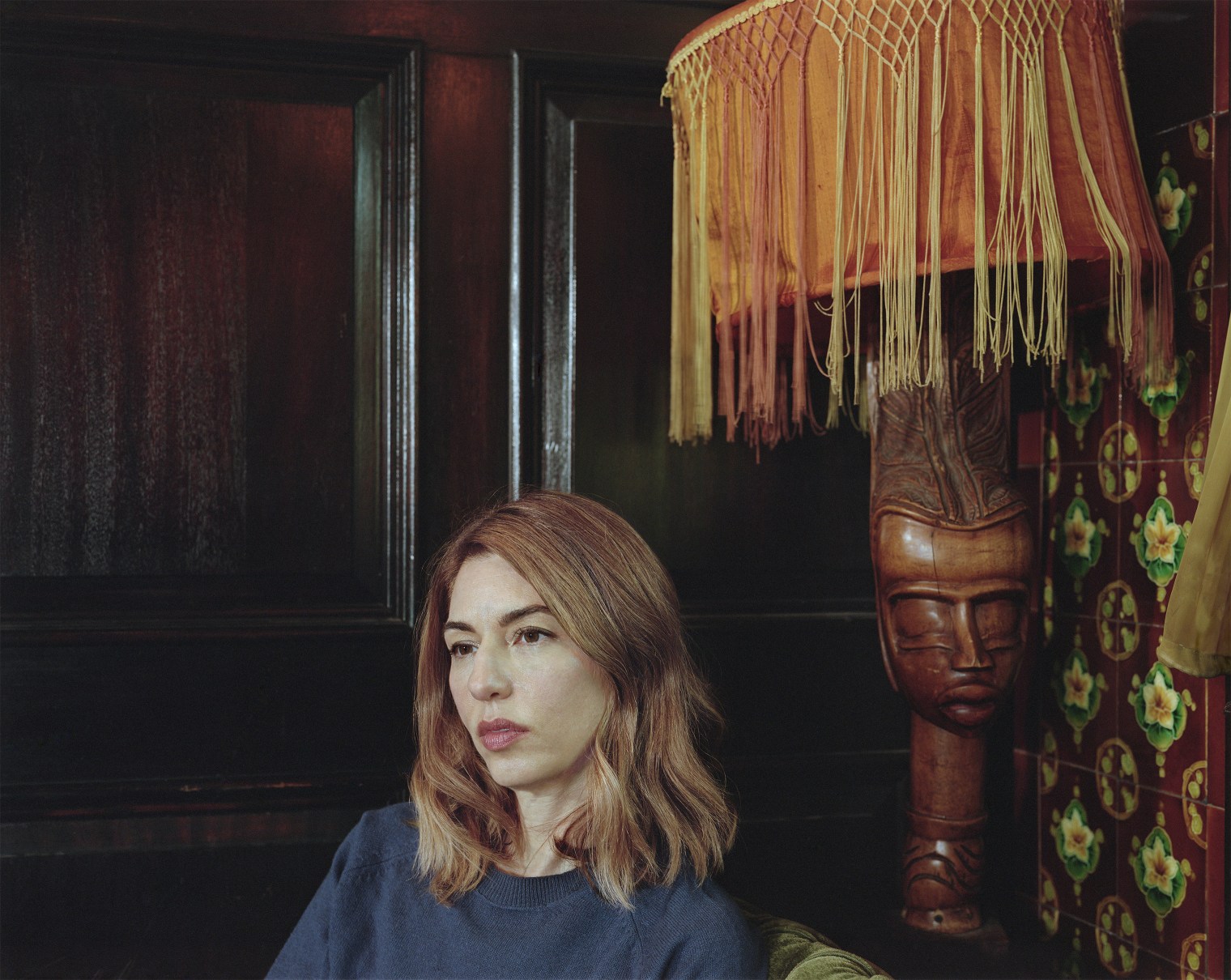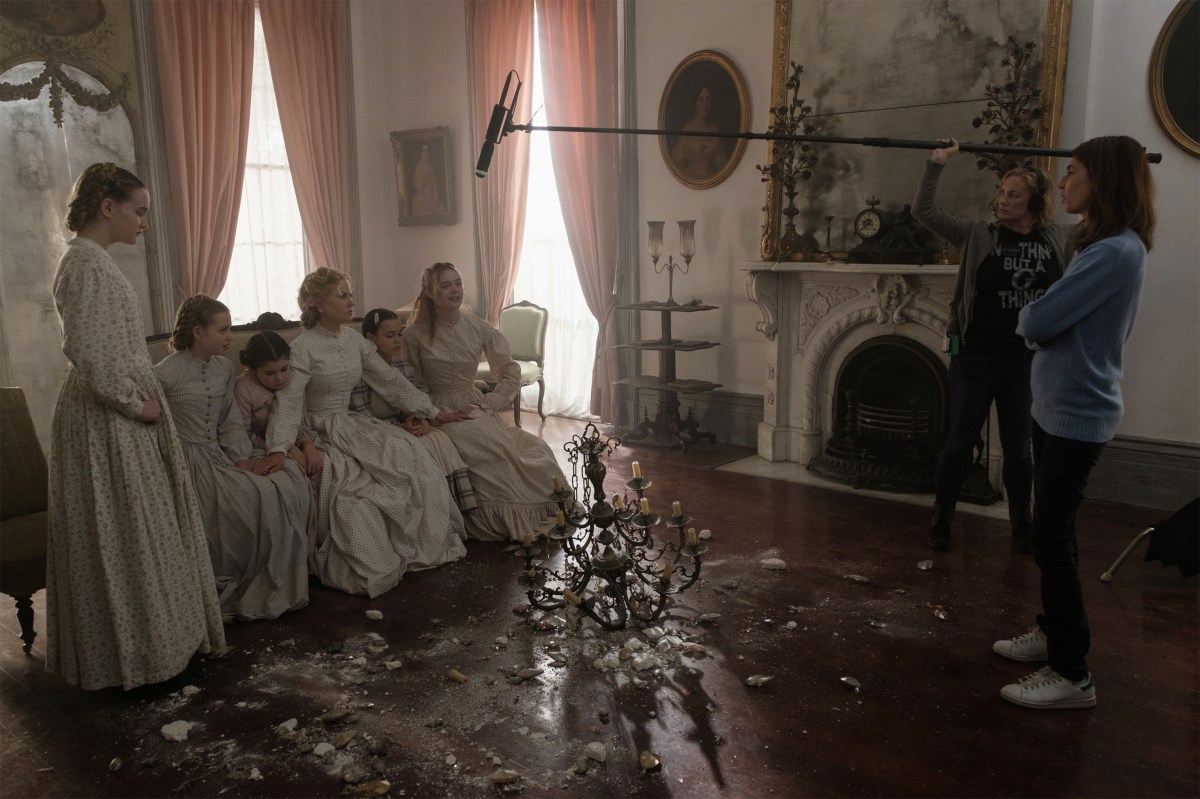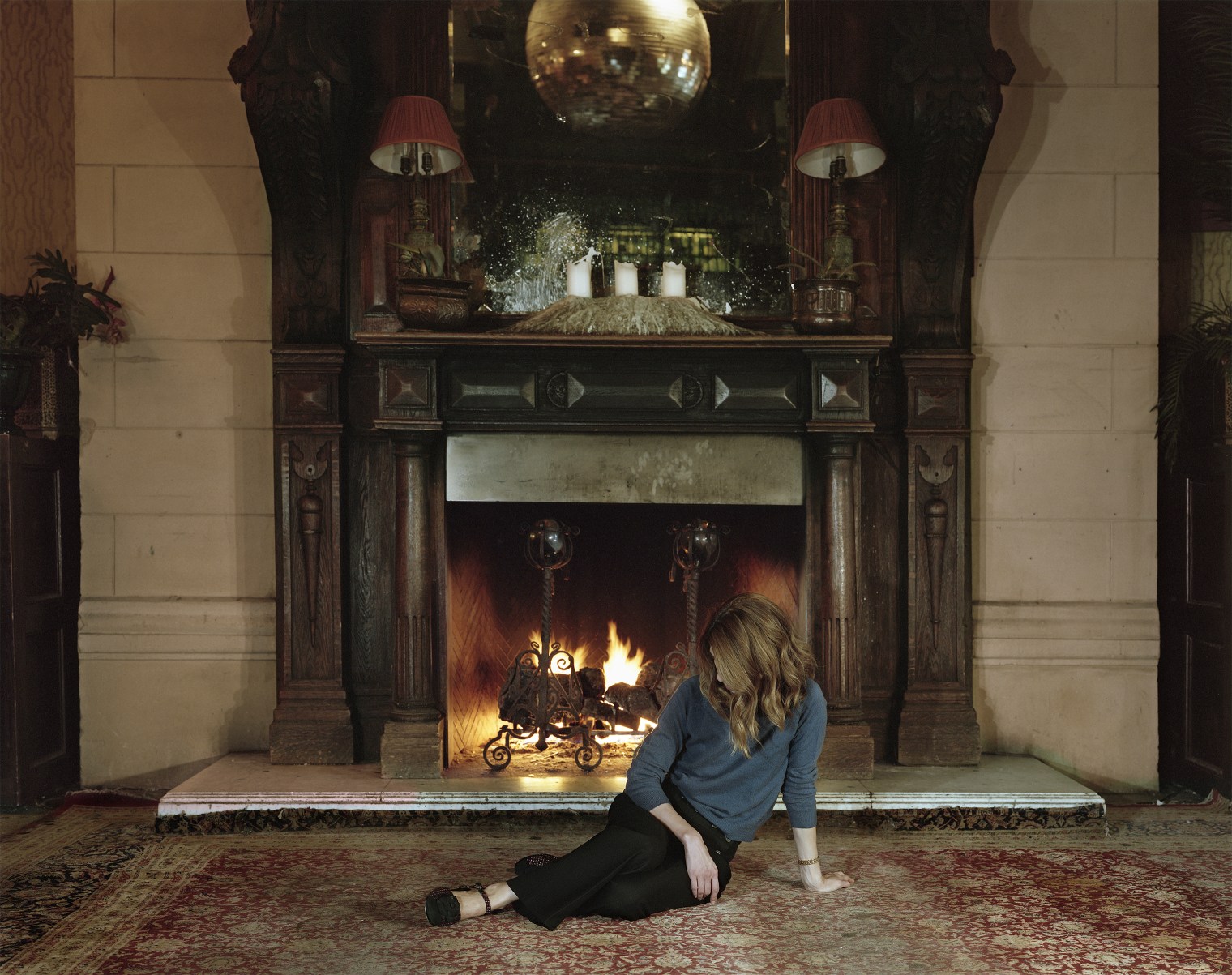Art on Film
 In one way or another, Coppola, here in New York City, has been studying the art of film since she was a child. Lise Sarfati for TIME
In one way or another, Coppola, here in New York City, has been studying the art of film since she was a child. Lise Sarfati for TIME
Sofia Coppola returns with The Beguiled, which builds on 18 years of considered work
By STEPHANIE ZACHAREK
Photographs by LISE SARFATI for TIME
What happens when, as a kid, you watch a Kurosawa film—or any Fellini confection, or Jean-Luc Godard’s Breathless—from the corner of your eye, drifting in and out of the room according to whim? Whims govern kids, and even if we think we can mold their minds by sitting them down in front of the things we think they ought to watch, there’s no way to know what’s going to make an impression. What if just a few frames’ worth of tattered samurai desperation or the sight of an impishly captivating Jean Seberg hawking newspapers along the Champs Élysées should open a side door big enough for a whole sensibility to eventually rush through?
Sofia Coppola grew up mostly in California’s Napa Valley as well as wherever her father Francis Ford Coppola happened to be shooting a film. As a kid, she engaged in that kind of osmotic half-watching. “We didn’t have TV reception where we lived,” she says, “so we watched videocassettes and laser discs. And my dad was always screening movies. I don’t know if I was paying much attention. He had a screening room in San Francisco, and we would just end up watching whatever they were watching.”
Even the way Coppola tells that story—during breakfast at a café in New York City’s West Village, just days before bringing her new film, The Beguiled, to the Cannes Film Festival—reveals something about her: she seems vaguely apologetic that she didn’t pay closer attention to all that cinematic greatness at the time. But she also seems to know that the real value of that kind of childhood was the freedom to just be around the grownups, quietly. You can become a good enough filmmaker by watching. But you can’t become a great one without observing.
 Lise Sarfati for TIME
Lise Sarfati for TIME
To be Sofia Coppola is to have grown up with certain advantages. The Coppola family tree is a verdant one: Sofia’s grandfather was composer Carmine Coppola; actors Jason Schwartzman and Nicolas Cage are her cousins; and her brother Roman produces her films through the family-run production company American Zoetrope. But lineage alone doesn’t determine who we grow up to become. At 46, Coppola, who has made six delicately distinctive feature films over the past 18 years, has built something of a stealth career. One movie at a time, she has established the kind of résumé you can’t possibly pull together without having a definitive idea of what you want and some finely tuned instincts about how to get it.
The Beguiled—which she adapted, with a light, discriminating touch, from a 1966 novel by Thomas Cullinan—is set in 1864 at a Virginia boarding school for young women. To the dismay of the school’s mildly repressed headmistress, played superbly by Nicole Kidman, one of the girls finds a wounded Yankee soldier (a rakishly intense Colin Farrell) in the woods and brings him in for care and nurturing. The soldier is charming but duplicitous, and he proceeds to toy with the affections of the women, drawing out their complex desires, anxieties and jealousies.
The Beguiled has been adapted for film before: Clint Eastwood and Geraldine Page starred in the seedily pleasurable version made by tough-guy director Don Siegel in 1971. But even though this new Beguiled retains some of the earlier film’s plot details, it’s very much a Sofia Coppola film. That’s partly because of its visual style. This is a gauzy Southern world, where feminine dreams are as visible and as easily crushed as moths fluttering around at dusk. But it also nods in the direction of Coppola’s debut film, The Virgin Suicides—based on Jeffrey Eugenides’ novel—about five pensive, shadowy sisters who are virtually imprisoned by their ultrareligious parents in 1970s suburban Detroit.
The similarities between the two stories aren’t coincidental. Coppola says her friend Anne Ross, a production designer with whom she frequently works, saw Siegel’s version of The Beguiled and, as a joke, dared her to remake it. “So I just watched it,” Coppola says. “I would never dream of remaking a movie, but it stayed in my mind. It reminded me of The Virgin Suicides. There was some connection, as if The Beguiled were the other half. It felt darker, almost like a mature version.”
The making of movies is such a high-stakes gamble these days—even for white male filmmakers, but especially for women and minorities—that the notion of a movie growing out of a tongue-in-cheek dare is particularly audacious. But that’s the Sofia Coppola way, to take the small thing you’re not sure anyone can relate to and discover that, in reality, plenty of people can.
Coppola has always been drawn to stories about groups of women and the dynamics within. Pre–Virgin Suicides, she made a smart, lively short called Lick the Star, set amid a clique of scheming middle-school girls. After watching Siegel’s movie—essentially a macho vision in which a bunch of crazy women undo one man’s life—she wondered what the story would be like if it were told from the women’s point of view. She was drawn to the fact that these women, with their genteel, prewar lives a thing of the past, were cut off from the world. “I loved the idea of the Civil War South, and those trees with the moss,” she says. “I would read these guides for women about manners and grooming. Everything was about being appealing and not too strong for men. I was fascinated by the idea that they were raised that way—the extreme version of that. And there are no men around.”
That empathy, brought to bear with the kind of gossamer lightness that demands precise thinking and definitive decisionmaking, is also part of the Sofia touch. In person, she’s small and delicate, though not exactly shy. She answers questions in looping, thoughtful sentences that sometimes trail off, a common trait among people with a vivid, rigorous visual imagination who are called upon to explain a thing that’s simply in their blood. The day we met, Coppola had just had a birthday, and a friend had given her the gift of a quote from artist Barnett Newman: “I’m a bird, not an ornithologist,” she paraphrased. Flying sure beats talking about flying.

Coppola’s actors say her ability to create a supportive environment on set, like on that of The Beguiled, earns her their devotion. Focus Features
Both slightly mysterious and easy to talk to, Coppola is like a Zen koan in a simple sweater and jeans, a kind of becalming puzzle. It’s easy to see why she tends to work with the same people repeatedly—or, rather, why they’re so often happy to come back and work with her. Some, like casting director and producer extraordinaire Fred Roos, she met through her father. Others, like Kirsten Dunst, have practically grown up making movies with her. Dunst was 16 when she starred in The Virgin Suicides as the poetically doomed teen-dream princess Lux Lisbon. In 2006 Dunst returned to play a real teenage princess—eventually a queen—in Coppola’s gorgeous and deeply sympathetic Marie Antoinette. And now Dunst returns—as luminous, fragile and complex as a porcelain cup—to play a frustrated teacher overcome with romantic dreams in The Beguiled.
“When I was younger, I always looked up to Sofia as kind of an older sister, someone I admired,” Dunst says. “Now our ages have caught up to each other and we’re more like girlfriends.” The set on a Sofia Coppola film is an environment Dunst is always happy to return to. “The vibe is very relaxed,” Dunst says. “She always sets a unique tone that lends itself to the film that she’s making. And she really creates an environment that lends itself to all the people creating around her.”
Kidman, who worked with Coppola for the first time on The Beguiled, noticed the same thing. She says she had “desperately wanted to work with Sofia” for years. Coppola went to see Kidman perform onstage in London, in Photograph 51, and gave her the script for her new film. Kidman loved it. “She has such a strong vision, and she knows exactly what she wants,” Kidman says. “Yet she is very demure and elegant, so there is an elegance to the filmmaking and the experience on the set. You just sort of want to do anything to make her happy.”
Kidman notes something else: “During the middle of shooting, my mother had a heart attack, and Sofia was so warm, kind and gentle with me. I am devoted to her because of that.”
Coppola clearly protects her actors, though she’d tell you that’s simply what all good directors do. “I feel like part of my role is to be protective,” she says. “I’m also grateful to actors. They’re exposed—they have to be vulnerable.” Yet there’s no doubt that Coppola always gets what she wants, and she slyly admits as much. “Maybe it’s being not aggressive, and petite,” she says. She is also, you suspect, adept at the fine art of asking people to help, instead of just ordering them around. She says that Bill Murray calls her the Velvet Hammer, which she loves.
Murray was one of the stars, with Scarlett Johansson, of Coppola’s 2003 film Lost in Translation. She pursued him, with comically stalker-like persistence, until he agreed to do the film. Coppola’s screenplay won an Oscar, but it’s a story she almost didn’t write, one loosely based on her own experiences as a visitor in Japan that folds in hints of personal loneliness. (Coppola was married to fellow filmmaker Spike Jonze at the time. The two separated shortly after the movie’s release. Coppola is now married to Thomas Mars, of the French rock band Phoenix.) Coppola’s movies don’t have dazzling plots. In fact, they sometimes have next to no real plot at all.
And because Coppola’s filmmaking style is so understated, her critics have often failed to see how deep she’s willing to go. Her 2013 film The Bling Ring, based on the true story of a bunch of SoCal teens who broke into celebrities’ houses to steal stuff and got away with it for a surprisingly long stretch of time, may not be her strongest film. Even so, Coppola understands the way young people yearn for things they can’t have, and their crushing desire to be perceived by their peers as cool. In Somewhere (2010), which won the Golden Lion in Venice that year, the festival’s top award, Coppola assayed the quicksilver flash between girlhood and womanhood. Her lead actor in that film, a magnetic, expressive Elle Fanning—who also returns in The Beguiled—captured that elusive ray of light as if it had been written into the script.
But then, of course, it pretty much had. Although Coppola acknowledges that she feels comfortable writing only about the world she knows, she realizes that deeply personal ideas are often the most universal. “I’m always surprised by that,” Coppola says. “When I was writing Lost in Translation, I thought, Nobody’s going to want to hear about an affluent girl who can’t find herself. It’s the most unrelatable thing ever. And just about my experiences in Japan—it was just something I wanted to express. What it was like to be there at that moment in life. It’s always very surprising that other people connect to things that you find very small and specific.”
 Lise Sarfati for TIME
Lise Sarfati for TIME
Coppola has been making films for nearly 20 years. And while, in 2017, there is suddenly a clamoring for better opportunities and more visibility for female filmmakers, it’s worth remembering that Coppola’s work, particularly her early movies, made her the target of all kinds of accusations, many of them outright sexist: She was bad, as an actor, in her father’s 1990 film The Godfather: Part III—a role she took on, she has said, largely because she was a kid, willing to try things out—and therefore nothing she did afterword could be any good. Or, if she did manage to make something good, it was only because her father had helped. Her stories, shallow and “fashiony,” were all about rich people, and look, she’s rich too. Those charges aren’t leveled at her as much today, though they’ll always be part of her story.
Meanwhile, then as always, white male filmmakers stream out of schools like NYU, certain that the world will be fascinated by their latest neurotic exercise in self-examination. Yet Coppola isn’t bothered much by any perceived or even real double standard, and you get the idea she never has been. Only once does she sound a mild note of defensiveness: “I remember when I made my first film, interviewers were asking me, ‘Oh, the casting was so good, did your dad help you?’ I can’t imagine they would ask a man that.” Still, she casts it off, saying, “People like to be dismissive. I try not to pay too much attention. I just keep doing my thing.”
Coppola is aware, of course, that she had an entrée into the film business that most others do not. But when she talks about her father, she stresses—and seems to most greatly value—the practical advice he has given her, advice that could really come from any good dad. He always told her that having a personal connection with the material is paramount. “That was something to strive for when I was learning about filmmaking,” Coppola says. Again, she deflects any special pleading for the idea that she, as a female filmmaker, has had it especially hard. “My dad was always fighting to make movies,” she says. “I never saw it as being easy for a filmmaker. So I never thought, Oh, it’s harder for me. I always saw it as being a fight to make the movie that you want to make.”
There are two kinds of filmmakers in the world: those who want viewers to be dazzled by how hard they’ve worked, and those whose hard work melts into the film. At Cannes, Coppola won the Best Director prize for The Beguiled.
Afterward, in a phone conversation, she says she is happy about the prize—but even so, she seems less happy for herself than for what the award could mean for other female directors. “I was surprised that I didn’t know that only one woman had gotten the award, in the 1960s,” she says, referring to the only other female Best Director winner, Soviet filmmaker Yuliya Solntseva, for Chronicle of Flaming Years. That was in 1961. “I just didn’t know about the history of that,” Coppola says, as if this stark, almost incomprehensible fact was somehow common knowledge.
Coppola has always had deep feeling for young people, and for women whose problems seem small but cut right to the heart of what humans want out of life. If she has made films about privileged people, she’s also gently critical about the bubbles they live in: “Making a movie about someone who’s cut off and out to lunch doesn’t make me out to lunch,” she says. She fills big, lustrous canvases with small emotional details.
And every now and then she wins a prize. But beyond winning, she’s busy thinking about what that prize really means. Hear that whoosh? It’s the sound of a hammer coming down, so soft you can barely hear it.